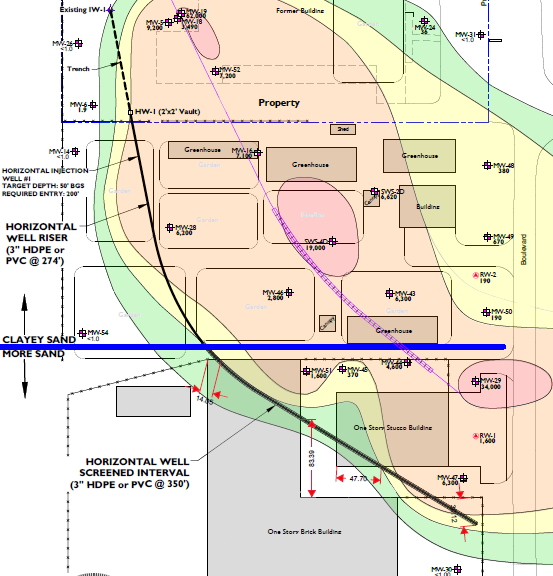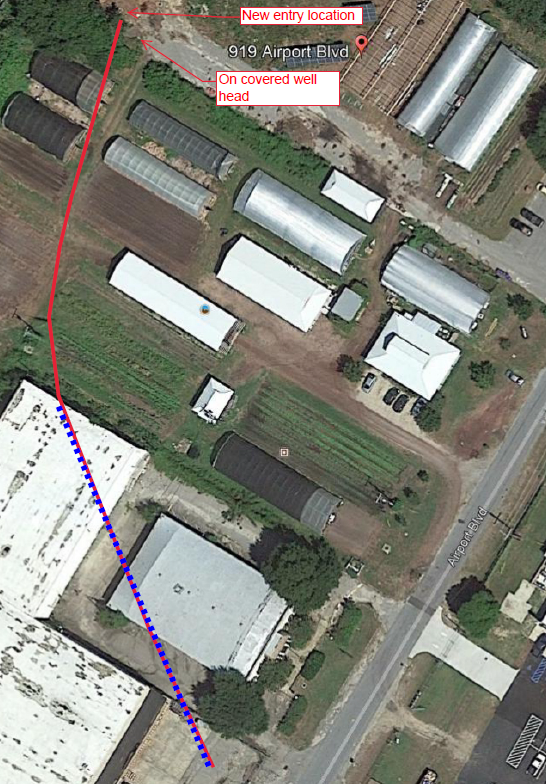Just as with a vertical well installation project, what may seem to be a simple cut and dry project on paper can present unforeseen challenges based on the realities of the ground conditions.
At one recent project, the unknown subsurface conditions threw a curveball at our team, requiring our client and Directional Technologies to brainstorm a quick redesign of the horizontal well layout and installation.
Background

A former industrial facility with groundwater contamination was under active remediation with a pump and treat system. After recovered groundwater was treated on-site, it was re-injected into the saturated zone through vertical wells. To gain improved injection rates, horizontal groundwater injection wells were selected to provide more efficient means of reinjecting.
The original design was two horizontal wells installed approximately 45 feet below ground surface with 250 to 350 feet of screen. Our client utilized Directional Technologies’ proprietary well screen design software to engineer the wells screen for even flow rates across the entire length of the screen. The horizontal wells were to be constructed of 3-inch diameter HDPE well material. The horizontal wells were prosed to be installed using blind installation methods, meaning an exit point was not going to be required.
Installation Challenges
The saturated zone (which was also the target zone for re-injection of groundwater), was comprised of a medium to coarse sand approximately 40 feet bgs. A compound curvature of the horizontal well path occurred at the transition of the vadose to the saturated zone. Once, within the saturated zone, our experienced directional driller discovered the subsurface material was very soft and unconsolidated, causing steering radius of the directional drill bit to be significantly minimized to the point where the originally planned well path could not be obtained.
Redesign

After unsuccessful attempts to drill the originally planned well paths, Directional Technologies worked with our environmental consultant-client to redesign the entry angle of the horizontal bore and suggested an alternate installation strategy. A shallower angle for the curvature of the horizontal well path was required, and therefore a new entry location was selected. The target location of the final well screen was slightly adjusted. In addition, the horizontal well was installed via entry-exit method instead of blind to ensure successful installation within the unconsolidated saturated zone.